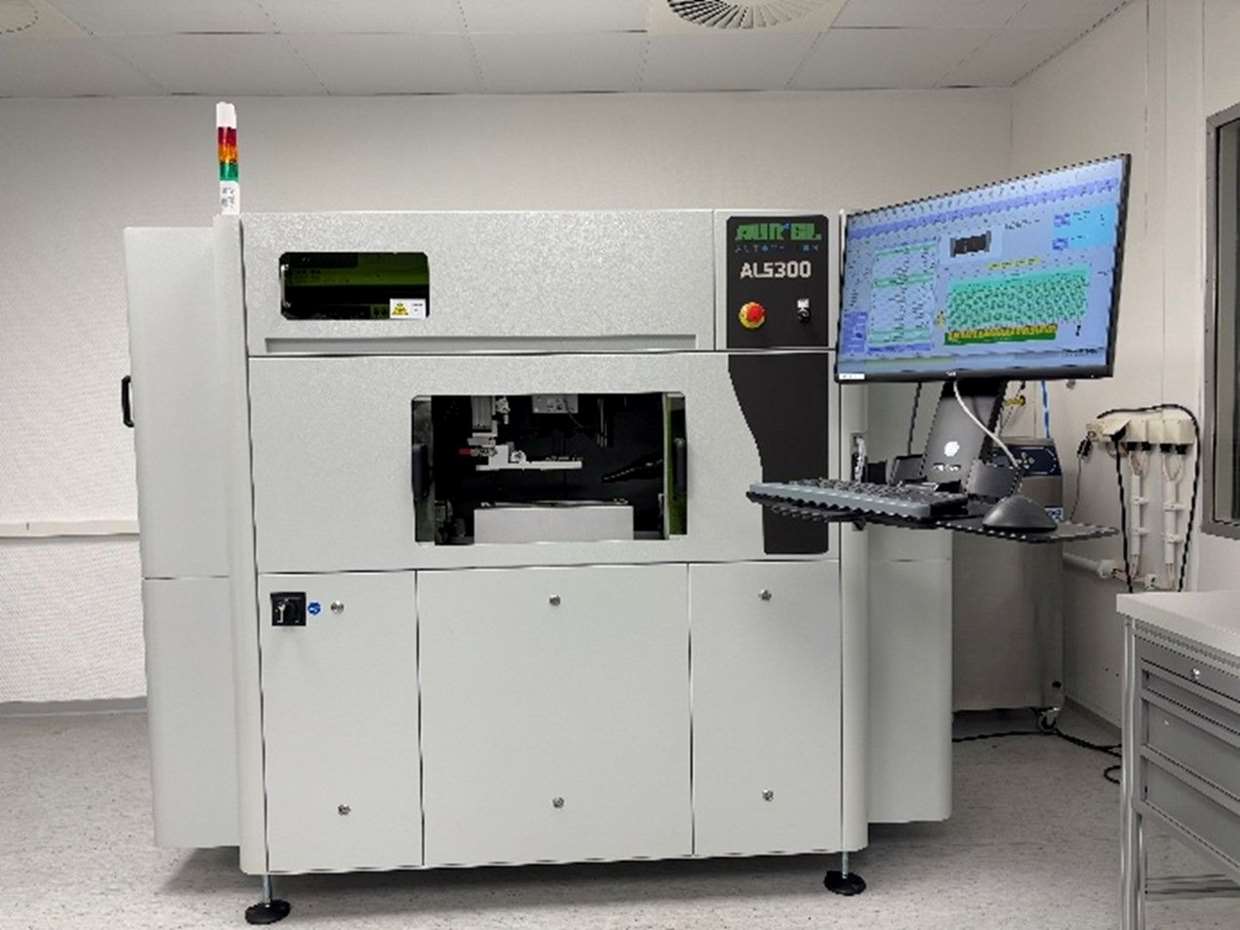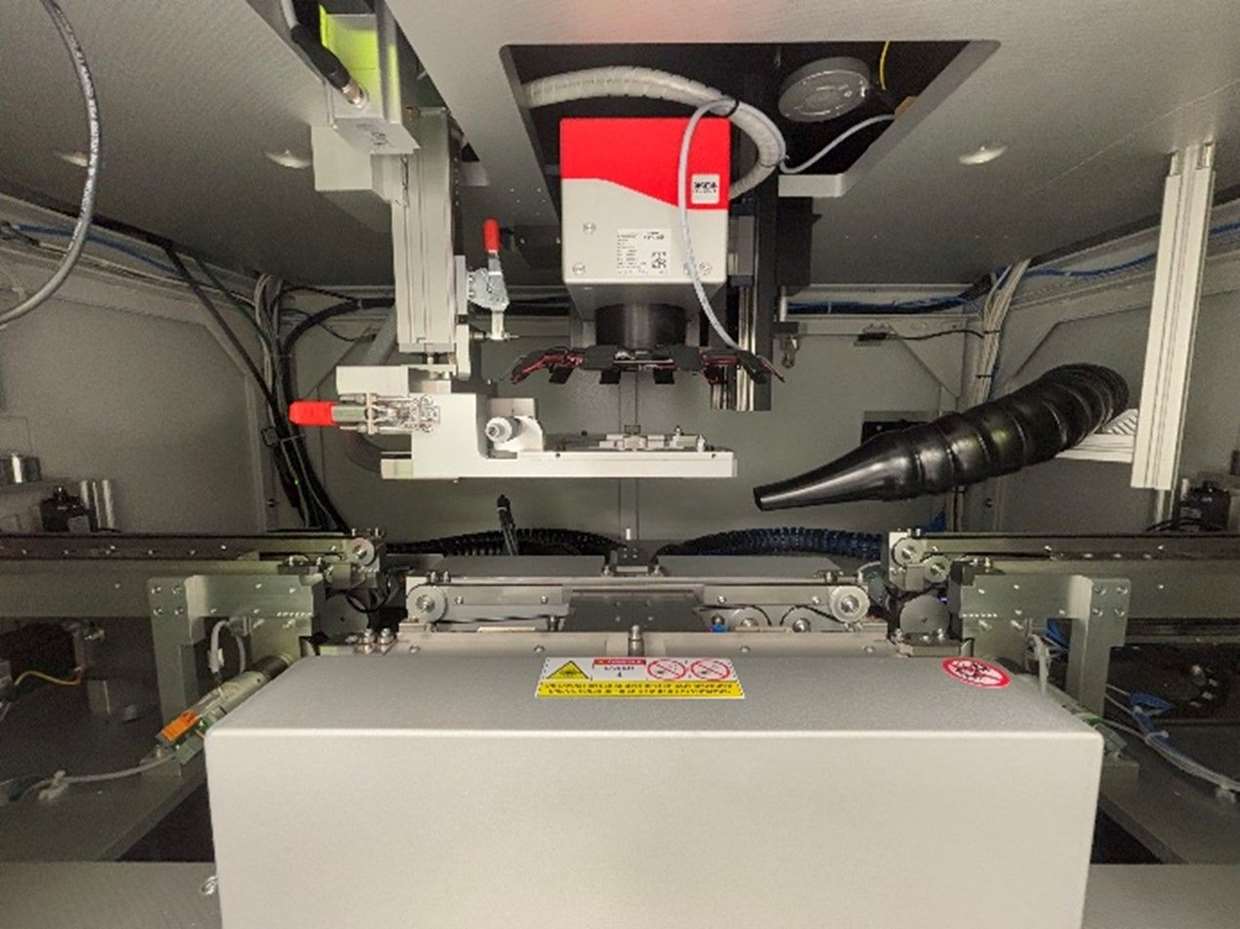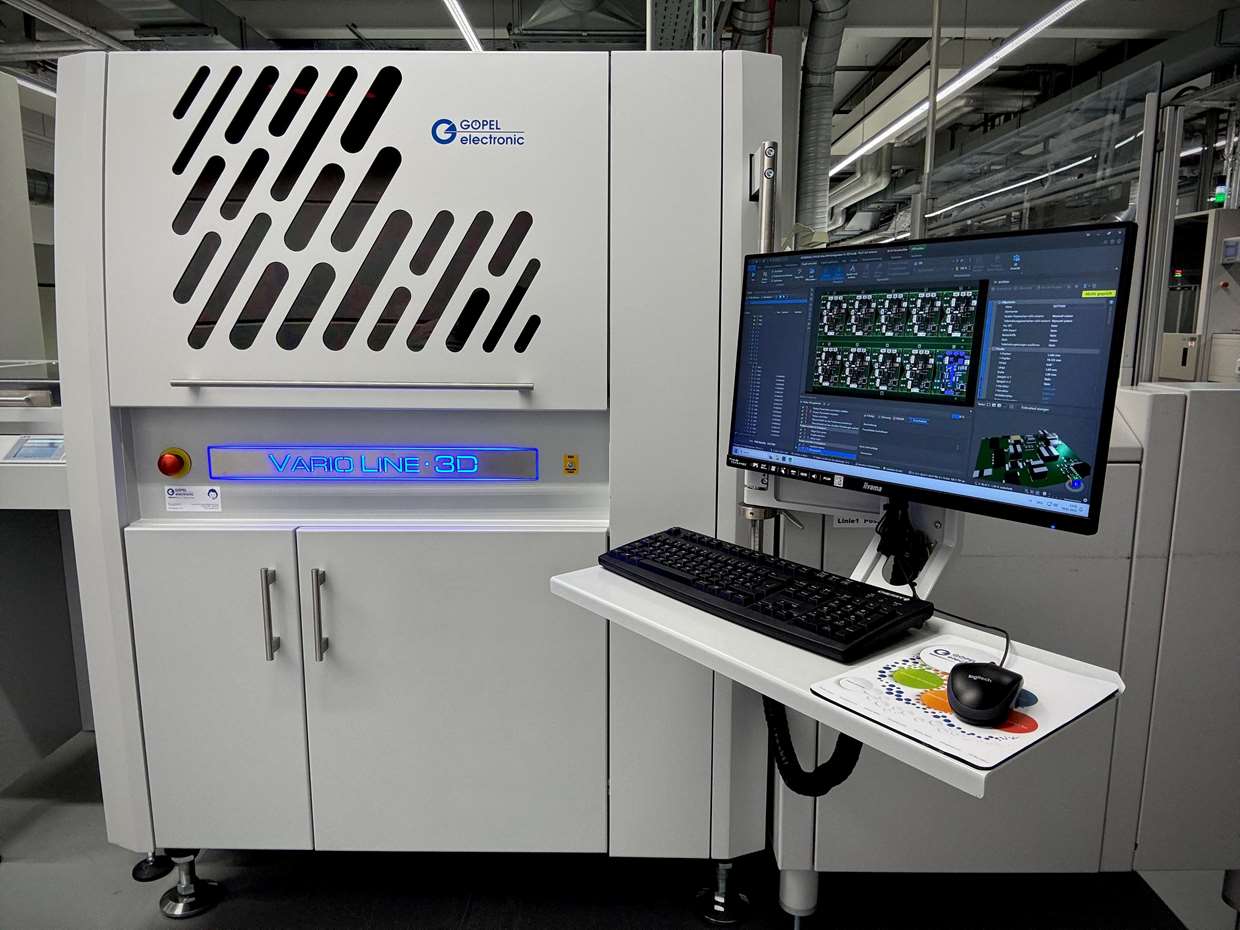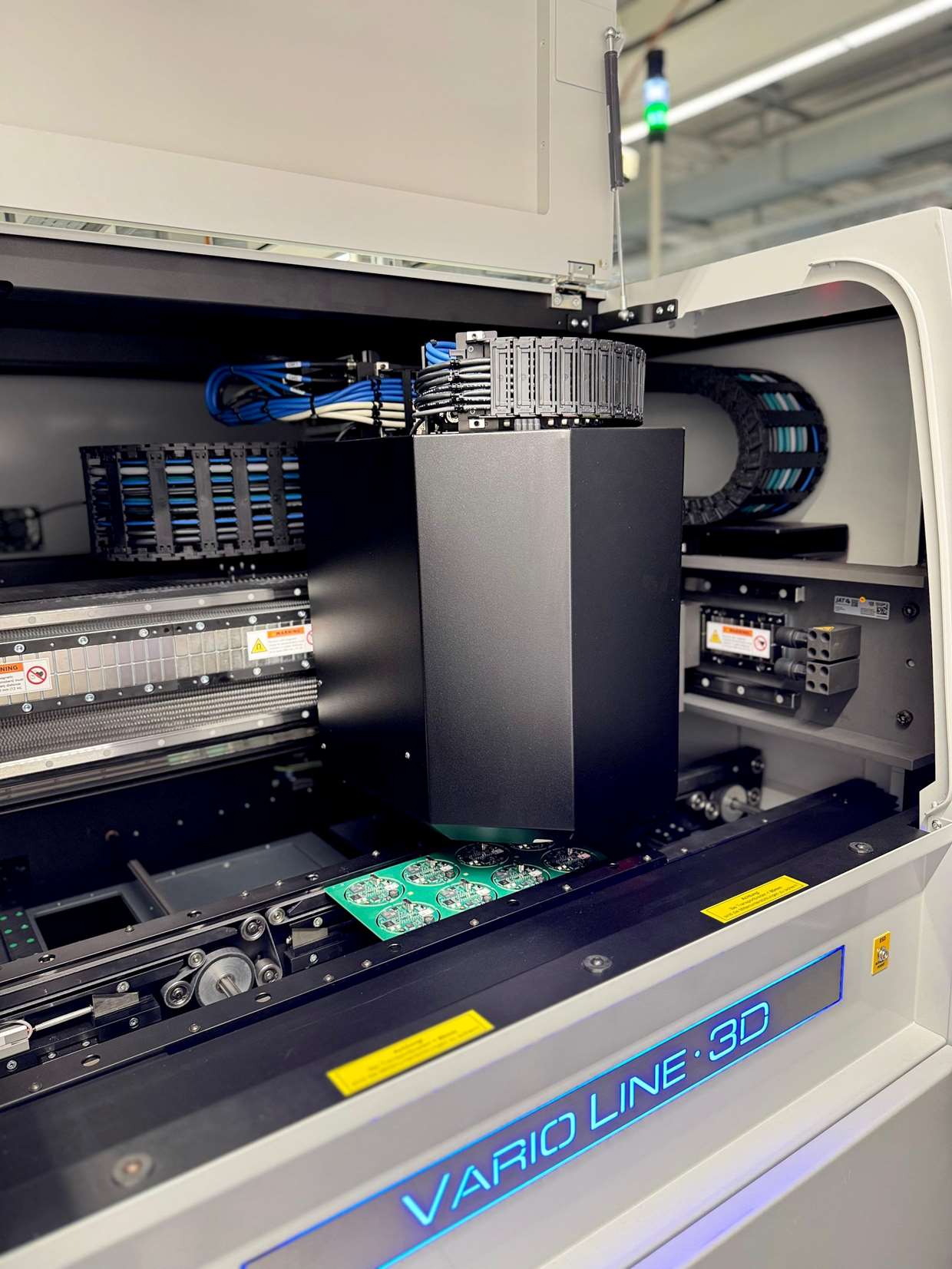Dresden / Radeberg, Germany
Replacement investment in a new alignment laser for thick-film technology
A flexible trimming laser, ALS300G from AUREL, Italy, was purchased at the Cicor site in Radeberg in the last quarter of 2024.

The system can be used for active and passive alignment and for measurement tasks. The infrared laser used (1064nm with a frequency range of 10Hz - 50kHz, laser beam diameter <40µm) can also be used for labelling a wide variety of products in thin- and thick-film technology due to its maximum output power of 12W.
Our ceramic printed substrates consist mainly of Al2O3, AlN, LTCC, glass and have thicknesses between 10 mil - 50 mil. The standard substrates with a panel size of 4‘’ x 4‘’ are loaded and unloaded using an automatic magazine system. Vacuum clamping of thinner materials during processing is possible by means of a support plate, whereby the maximum laser working area in X and Y direction is 300mm x 200mm.
Furthermore, it is possible to carry out the resistance adjustment within housings with a total height of up to approx. 20 mm including connection pins. Connection options for the use of external measuring devices are available. A statistical evaluation is automatically generated by the adjustment programme.

With this system, we can achieve resistance adjustment tasks for fired thick-film pastes in large value ranges (< 1Ohm ... several GOhm) with a high accuracy of <0.5%.
The input and output unit enables continuous operation from magazine to magazine, which reduces the processing times of the ceramic substrates by approx. 15% -20%. The machine can be used in rooms of class ISO 7 according to EN ISO14644-1 and has laser protection class 1 during operation due to its design. The contamination generated during the process is extracted and neutralised by a built-in filter system.
It is also possible to calibrate assembled active circuits in the operating state. Circuit parameters such as current, frequency and pulse width are continuously calibrated to a target value. The additional measurement technology in an external 19’ rack is provided by RHe Microsystems GmbH. Signal routing, which is independent of passive equalisation, is carried out via a specially configured, laser-protected opening on the system. The external hardware is controlled by means of SCPI commands sent by the operating programme via an Ethernet network connection. The trimming process is controlled depending on the measured values of the external hardware. The protocol is generated in the same way as passive adjustment.
With this investment, Cicor RHe Microsystems GmbH continues to guarantee long-term production reliability for assemblies for the aviation sector.
Dr. Bernd Schauwecker
Head of Engineering
New AOI systems at Cicor Deutschland GmbH in Dresden
Automatic optical inspection (AOI) of electronic assemblies (EAs) has become an integral part of the production process for EMS service providers. It has been used for many years to ensure 100 percent inspection of the quality of assemblies. High-resolution cameras and software analyse the assemblies for defects such as soldering problems, component placement errors or misalignments.
3D AOI takes the concept of traditional 2D AOI to a new level by adding height information to the inspection process. While 2D AOI evaluates images with colour information to inspect components or structures, 3D AOI uses advanced technologies such as structured light, laser triangulation or stereo imaging to capture detailed 3D profiles of the objects to be inspected. This additional height information helps to detect defects that may be difficult to recognise with 2D systems. Examples of this are bridges or so-called pin hangers in solder joints, coplanarities of components or misalignments of components in height and position.
A combination of 2D, 3D and oblique view AOI additionally increases safety when inspecting BGs, for example, labelling and lateral solder connections of EAs can also be inspected.
The Cicor Deutschland site in Dresden Weissig is confronted with increasingly complex PCB layouts and simultaneously decreasing component sizes. At the same time, efforts are constantly being made to increase the efficiency of EAs production on the two existing SMT assembly lines.
Against this background, the decision was made in 2024 to upgrade an existing AOI system from the manufacturer Göpel electronic GmbH to a fully comprehensive 3D AOI.
The installation process and the associated employee training measures were completed in summer 2024. This was followed by a phase characterised by an extensive gain in knowledge about the advantages of the newly implemented 3D technology. After just a few programmes had been created, the employees acquired an extraordinary routine. This made it possible to create inspection programmes in around 30% of the time previously calculated for 2D programmes. The basis for this was the newly introduced “PILOT AOI 7” software with the “MagicClick” component from the system manufacturer Göpel electronic GmbH.
In addition to the increase in efficiency in pure programming, the programmes created also proved to be extremely robust, meaning that the number of so-called pseudo errors could be rapidly reduced by a factor of 10.
These advantages led to the decision to upgrade the AOI in the second SMT assembly line in autumn 2024. In view of the age of the system used to date, the only option here was to purchase a completely new machine. Due to the many years of successful cooperation with Göpel electronic GmbH and in order to achieve synergy effects in the area of programme creation and operation of the systems, the decision was made in favour of the currently most powerful model “Vario Line 3D X300” from the manufacturer in Jena.
The investment process was completed in record time so that the new AOI system could be delivered before the turn of the year 2024/25. The installation of the device and the training of additional employees then took place in calendar week 2/2025.
With these investments, the Cicor site in Dresden is laying the foundations for a future-proof, high-performance automatic optical inspection system and is thus taking a safe route to quality inspection.
Thomas Schönfeld
Engineering, Cicor Deutschland GmbH

